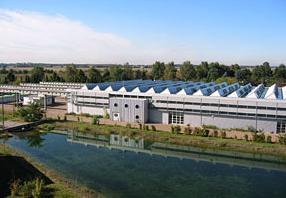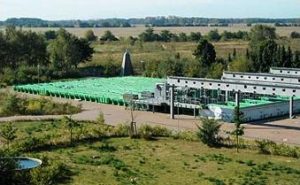German Environment Agency
Outdoor and indoor pond and stream system. The facility comprises 8 indoor and 8 outdoor ponds and streams, the latter of 1.6 km total length (indoor + outdoor). Water bodies are large enough to carry all trophic levels including fish
Control of light, temperature, flow velocity, wind, colonization of insects etc.,
Simulation of groundwater flow in semi-natural conditions (influent/effluent flow regime, remobilization of substances)
Ecotoxicological, ecological, and hydrological studies (fate and effects of pesticides, biocides, pharmaceuticals, or industrial chemicals in ponds or streams; fate of viruses in bathing waters; model verifications; vertical mass transport water/sediment;
light pollution)
Ecotoxicological studies
Upcoming years: mixture toxicity of chemicals, degradation of plastics, passive sampling (chemicals)
Each stream and pond is equipped with online instruments to continuously measure conductivity, O2, pH, water level, temperature, turbidity and, in streams, flow velocity. Chemical variables such as contaminants in water, sediment and biota can be measured in the laboratory according to demands. FSA is well equipped with gas chromatographs-mass spectrometers (GC-MS), high-performance liquid chromatograph (HPLC), an inorganic carbon (IC) analyser, a TOC analyser, automated titration units, an ion chromatograph, a continuous flow analyser for nutrient analyses (N, P), etc. In addition, light conditions in and above the water of streams and ponds, chlorophyll a and phaeopigments, and many other biological variables are routinely analysed. All experimental data are fed into a central data base for quality checks and analysis. The input of data entry, in particular physico-chemical data, from defined analysis protocols is automated. The database user programme is independent of the system software and is available on the internet.
Mohr et al. 2005 ESPR – Environ Sci & Pollut Res 12 (1)
 |
 |
 |
